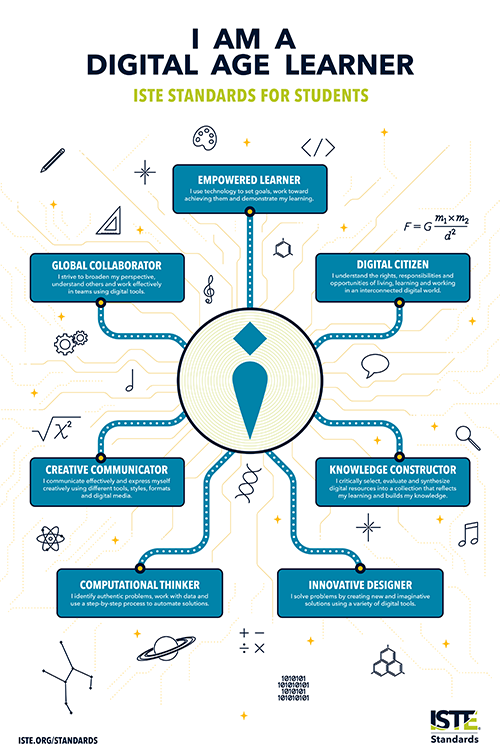gamification in elearning

++++++++++++++++
more about gamification in learning in this blog:
https://blog.stcloudstate.edu/ims?s=gamification
Digital Literacy for St. Cloud State University

++++++++++++++++
more about gamification in learning in this blog:
https://blog.stcloudstate.edu/ims?s=gamification
instructional design theories; https://www.pinterest.com/pin/481674122631499049

+++++++++++++++++++++++++++++++
more about instructional design in this blog:
https://blog.stcloudstate.edu/ims?s=instructional+design
https://www.pinterest.com/pin/185351340894383707

The Library Information Technology Association (LITA) (http://www.ala.org/lita/) listserv has great exchange of information on the phenomenon “fake news”. Excellent ideas and suggestions were shared:
http://nymag.com/selectall/2016/11/heres-a-browser-extension-that-will-flag-fake-news-sites.html
https://docs.google.com/document/d/1OPghC4ra6QLhaHhW8QvPJRMKGEXT7KaZtG_7s5-UQrw/edit
Here is a link to the Twitter hashtag application: https://twitter.com/hashtag/fakenews?ref_src=twsrc%5Egoogle%7Ctwcamp%5Eserp%7Ctwgr%5Ehashtag
++++++++++++++++++++++++++++
More on activism, civil disobedience in this IMS blog:
https://blog.stcloudstate.edu/ims?s=civil+disobedience
Well, technically not the first for 2016, but certainly beautiful:
Best experience with VR goggles: Google Cardbox, HTC Vive etc. (please ask for more info if needed). If you have goggles, choose “VR Mode” (1), if viewing on your computing device (desktop, laptop, smart phone, tablet) and/or don’t have goggles, choose “Panorama Mode” (2)
If you would like to brainstorm ideas to apply Virtual Reality, Augmented Reality and/or 360 video in your courses, please let us know…
https://blog.stcloudstate.edu/ims/2018/04/18/iste-standards-for-students-2/

http://info.iste.org/iste-student-standards-transform-the-classroom-poster
++++++++++++++++++++++++
More on ISTE in this blog:
https://blog.stcloudstate.edu/ims?s=iste
more on digital literacy in this blog:
https://blog.stcloudstate.edu/ims?s=digital+literacy
more on digital citizenship
https://blog.stcloudstate.edu/ims?s=digital+citizenship
Storyboarding: A Simple Way To Get Professional In Course Authoring
in Geenio (https://www.geen.io/) this mode is called the Pathboard, and entering it allows you to see the structure of your whole course, the sequence in which pages and tests are presented, as well as the connections between them. Some course editors not only provide you an overview of your course’s structure, but enable you to edit the course’s structure and add additional elements to it as well.
++++++++++++++++++++++++++++++
More on storyboard importance for your hybrid/online course design:
+++++++++++++++++++++++++
https://blog.stcloudstate.edu/ims/2016/04/06/guide-to-project-based-learning/
tools for iOS, Android etc.
+++++++++++++++++++++++++++
++++++++++++++++++++++++++++++
https://blog.stcloudstate.edu/ims/2014/04/20/how-to-gamify-your-classroom-in-6-easy-steps/
+++++++++++++++++++++++++++++
https://www.marketplace.org/shows/marketplace-tech/marketplace-tech-thursday-november-17-2016
Film isn’t the only medium that gets the virtual reality treatment. The best-selling author Wally Lamb has a new book called “I’ll Take You There” that’ll launch as part of the Metabook line — a series of works that include extras like 360 degree videos and photos.
+++++++
More on ebooks in this IMS blog
https://blog.stcloudstate.edu/ims?s=ebook
signal app
open whisper system is the company
download from the NPR Marketplace Tech available here:
http://play.podtrac.com/APM-MarketplaceTechReport/play.publicradio.org/rss/d/podcast/marketplace/tech_report/2016/11/16/tech_20161116_pod_64.mp3?siteplayer=true&dl=1
More on the app in the Codebreaker podcast
++++++++++++++++++++++++++++
more on cybersecurity in this blog:
https://blog.stcloudstate.edu/ims?s=cybersecurity
More on civil disobedience in this blog:
https://blog.stcloudstate.edu/ims?s=civil
VR Sales Analysis: Rift and Vive to Sell Under 500,000 in 2016, PS VR to Top 2 Million
https://plus.google.com/+RoyHembree/posts/SLfwsD8eXcm
+++++++++++++++++++++++
More on VR in education in this IMS blog:
https://blog.stcloudstate.edu/ims?s=virtual+reality